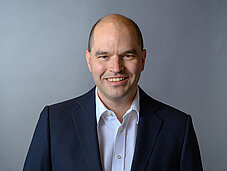
PSD Analysis: Computation of Randomly Excited Structures
The virtual vibrating table: shaken, not stirred – nothing is left to chance

In this training, you will acquire knowledge of characteristics describing random vibrations up to the life cycle evaluation of simulated shaker tests. This training is offered as a 2-day course.
Duration
2 days
Prerequisites
Basic knowledge of Ansys Mechanical
Software used
Ansys Mechanical
- Correct description of stochastic excitation in dynamic analyses
- Understanding the power spectral density (PSD)
- simulating shaker tests in self-study exercises
- Determining the fatigue and endurance of a component on a vibration test stand with simulation
Description
This training teaches the fundamentals required to execute PSD analyses. Emphasis is placed on the treatment of the random character of this special form of dynamic excitation. Statistical variables such as correlation, covariance, the standard deviation “one sigma” and the associated probabilities are discussed in detail. Practical exercises for random vibrations, such as the simulation of a shaker test, teach the required skills for performing other calculations. The training concludes with an overview of common evaluation methods for the vibration resistance of components under PSD excitation.
Take advantage of our knowledge of the accurate simulation of shaker test experiments. Acquire the knowledge required to independently carry out PSD analyses. Let us help you to develop a strong foundation of theoretical knowledge on the simulation of structures under random excitation.
This course is aimed at engineers concerned with the design and qualification of components under dynamic random excitation (PSD excitation) using the numerical simulation tool.
Detailed agenda for this 2-day training
Day 1
01 Theory of random processes
- probability distributions
- The stationarity and ergodicity of random processes
- Mathematical expectation of 1st and 2nd order
- Mean, standard deviation, and variances.
- Correlation, covariance, and auto variance
- Exercise: Determining statistical parameters
02 PSD spectrum for FEM calculation
- The path from the time series to the PSD spectrum
- The autocorrelation function
- Determining the PSD spectrum based on the autocorrelation function
- Defining PSD spectra for an FE analysis
- The characteristics of PSD spectra
- Exercise: Defining PSD spectra for FEM analyses
03 Comparison of a transient analysis with a PSD analysis
- Modal superposition as a central reduction method for spectral computation
- Computation in the time domain and the frequency domain
- Fourier transformation and inverse Fourier transformation
- Exercise: Computing of a simple example in the time and frequency domain
04 The different types of PSD excitation
- Base excitation in one direction
- Base excitation in three directions
- Spatial correlations between the directions
- Force excitation
- Pressure excitation
- Exercise: Computation of an example model with all excitation types
Day 2
05 Advanced postprocessing of PSD analyses
- Statistical moments
- Level crossing frequency
- First excursion failure
- Functional failure
- Exercise: Advanced postprocessing on a PCB model
06 Theory of fatigue strength assessment after a PSD analysis
- Determining the required input data
- Damage computation with a damage accumulation hypothesis
- The Steinberg method
- Exercise: Damage computation in accordance with the Steinberg method
07 PSD fatigue strength assessment in practice
- Fatigue and endurance evaluation with user-defined results
- Fatigue and endurance evaluation with the Workbench Fatigue Tool
- Fatigue and endurance evaluation with Ansys nCode DesignLife
- Exercise: Vibration strength evaluation on a real structure
08 PSD submodeling
- Modal analysis and modal coefficient extraction
- MAPDL workflow for PSD submodeling
- Exercise: PSD analysis of a fillet weld in the submodel with R1MS concept
Your Trainers

Oliver Siegemund

Klaus-Dieter Schönborn
Placement in the CADFEM Learning Pathway
Participant data
Additional information
Commentary
Whether eLearning, classroom courses, live online training or customized workshops - together we identify the best option for you.
What CADFEM customers are saying
Do you have questions on the training?
If you book through your university, you will receive a 50% discount on the stated fee on training courses and eLearning courses.
For more information on the validity and how booking with the code ACADEMIC50 works, please visit our page on training for academic users.
Straight after you sign up, an automatic confirmation of receipt will be sent to the email addresses you provided. Once you have successfully verified the data you provided, you will receive your personalized sign-up confirmation, containing further information on course fees, the billing address, etc., by email within two to three working days.
As soon as the minimum number of attendees has been reached, you will receive a final training confirmation containing further information. If you have booked an on-site training, we recommend that you wait until you have received this final confirmation before booking your travel and accommodation.
If the minimum number of attendees is not reached, we reserve the right to cancel the training seven days before it is due to start at the latest. We are happy to inform you on changing your booking to an alternative date. Please note that we accept no liability for hotel or travel bookings that attendees have already made.
Usually the training courses start at 9:00 am and end at 5:00 pm of the respective local time. The actual course times will be stated in the booking confirmation. Please note that, depending on the training host, there may be a possible time shift between your and the provider's local time. Therefore all local times are provided with the valid time shift to Greenwich Mean Time (GMT).




